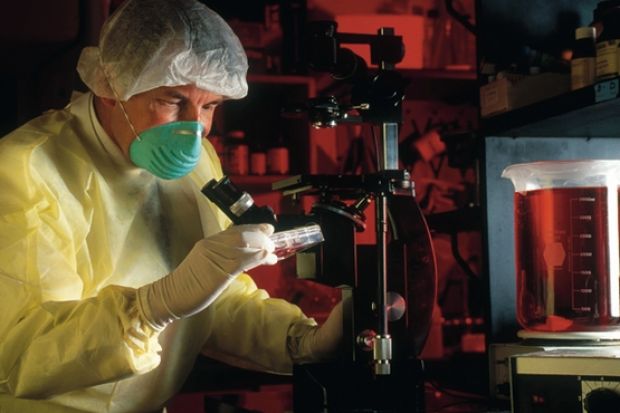Sir John Savill's Wikipedia entry describes him as an "attritional...opening batsman" who is "well renowned" for once scoring just three runs in 72 balls.
In his first interview since taking over from Sir Leszek Borysiewicz as chief executive of the Medical Research Council last October, Sir John attributed the remarks to his son, calling it a dig at a self-penned reference to a 47-ball score of 88.
Sir John's "careful approach" was vindicated by his team's victory and he argues that "teamwork and determination" are also key to success in the "long game" of clinical research.
"In my case, it has taken 25 years to go from the discovery of how inflammation resolves to having medicines in patients," he said.
And although he acknowledged that an emphasis on impact was the key point in the MRC delivery plan published last month, the former head of medicine and vice-principal of the University of Edinburgh insisted that this did not mean that long research timescales - often associated with blue-skies work - would no longer be tolerated.
"Blue-skies research is an important part of our activity because it is where the best ideas come from. In addition, we are now confirmed in being tooled up to do the translation (of basic research into clinical treatments). It is not a shift of emphasis: it is about having resources to do both (basic and applied research)," he said.
Unlike the other research councils, the MRC's income will be protected in real terms over the next spending review period.
But Sir John is not embarrassed about being singled out for special support. He said it made sense for the MRC budget to be "tagged" to rises in the Department of Health's allocation. "You could argue that the other research councils benefited from their connection to health as well as wealth," he added.
That wealth derives from the MRC's technology-transfer arm, which, according to Sir John, earned more royalty income for the UK between 2003 and 2008 than the whole of the higher education sector put together.
But he warned that the council could not expect such a favourable dispensation in the next spending review if it did not live up to its promises to deliver even more.
He said partnerships with industry and with the Technology Strategy Board would help ramp up the translational initiatives that had already resulted in "dramatic culture change" since the 2007 spending review, when the MRC was given a big budget increase on the understanding that it "got real" about commercialisation.
Like all the other research councils, the MRC has suffered a 23 per cent real-terms cut in its administrative budget. Despite this, Sir John said he did not envisage "any major disruption" because of measures already taken, including the move of significant numbers of MRC staff from London to the research councils' shared premises in Swindon.
In common with other research councils, the MRC wants to boost the success rates of young researchers applying for grants. The delivery plan identifies this as a priority.
To this end, Sir John thinks that rather than rejecting their applications outright, the MRC might "pump-prime" their ideas with a small short-term grant; combined with feedback, this would "allow them to come back in a stronger position to apply for a full grant".
The door is open, and will remain so
Mindful of the need to keep the MRC's door open to the "very best ideas", he would be reluctant to impose demand-management measures on grant applications. He thinks the MRC's success rate - 19 per cent in 2009-10 - looks "reasonable" compared with that of the US National Institutes of Health, which is currently in single figures.
Sir John said he was confident that the council's close relationship with the relatively small number of institutions it funds would avoid the need to wield "a big stick" to convince them to weed out low-quality grant applications by first "kicking them around in-house".
He is keen for more universities to join University College London in getting involved with the UK Centre for Medical Research and Innovation, the multimillion-pound interdisciplinary medical research institute it is co-funding. King's College London and Imperial College London have indicated an interest.
Sir John said his "love" for the MRC meant that he had not thought twice about stepping up from council chair to the post of chief executive even though things looked "a bit bleak" in the run-up to the spending review.
But he insisted that he had little appetite for the limelight and looked forward to Fridays, when he joins his technician and his postdoctoral research Fellow in Edinburgh to continue his own research.
Reaching for another sporting simile, he likened his job as MRC chief executive to that of a football referee: "The best ones are invisible. The trick is to make sure the players are attracting all the attention and scoring the goals."
Register to continue
Why register?
- Registration is free and only takes a moment
- Once registered, you can read 3 articles a month
- Sign up for our newsletter
Subscribe
Or subscribe for unlimited access to:
- Unlimited access to news, views, insights & reviews
- Digital editions
- Digital access to THE’s university and college rankings analysis
Already registered or a current subscriber? Login
